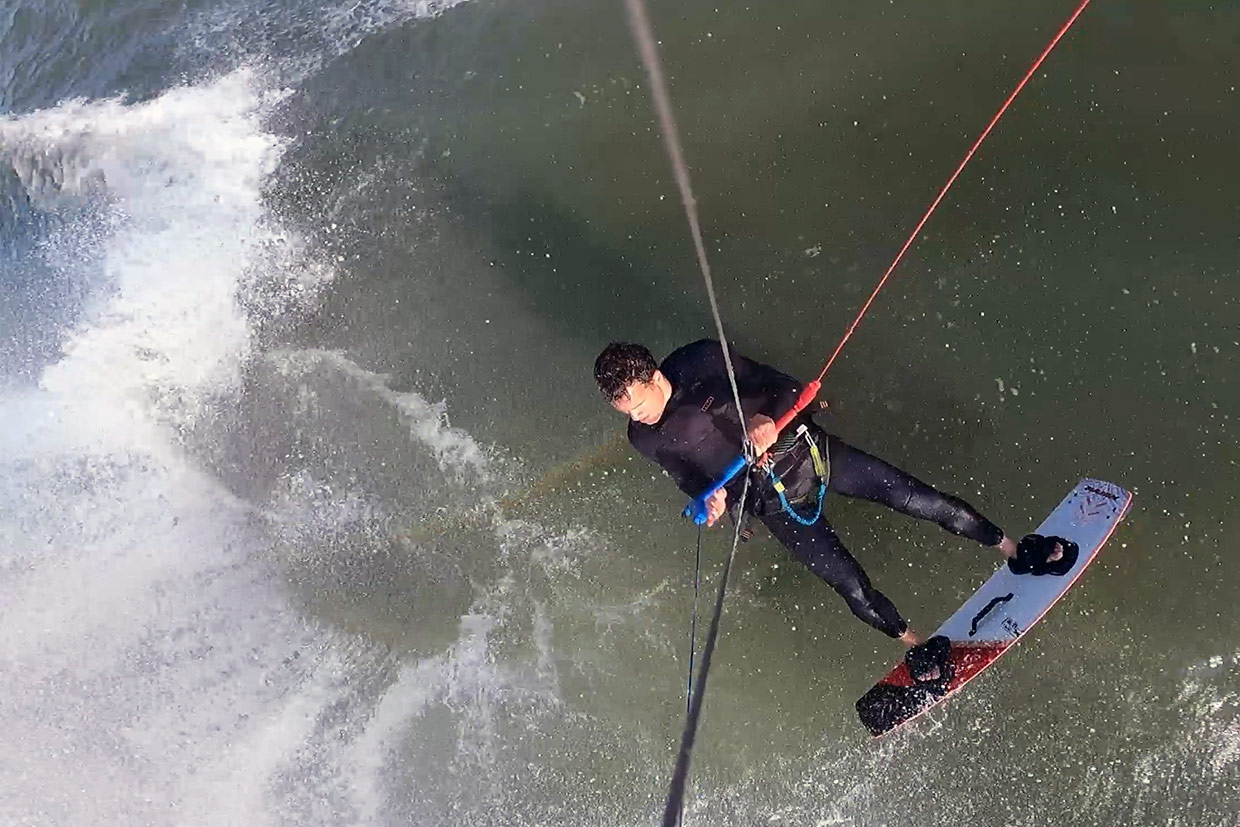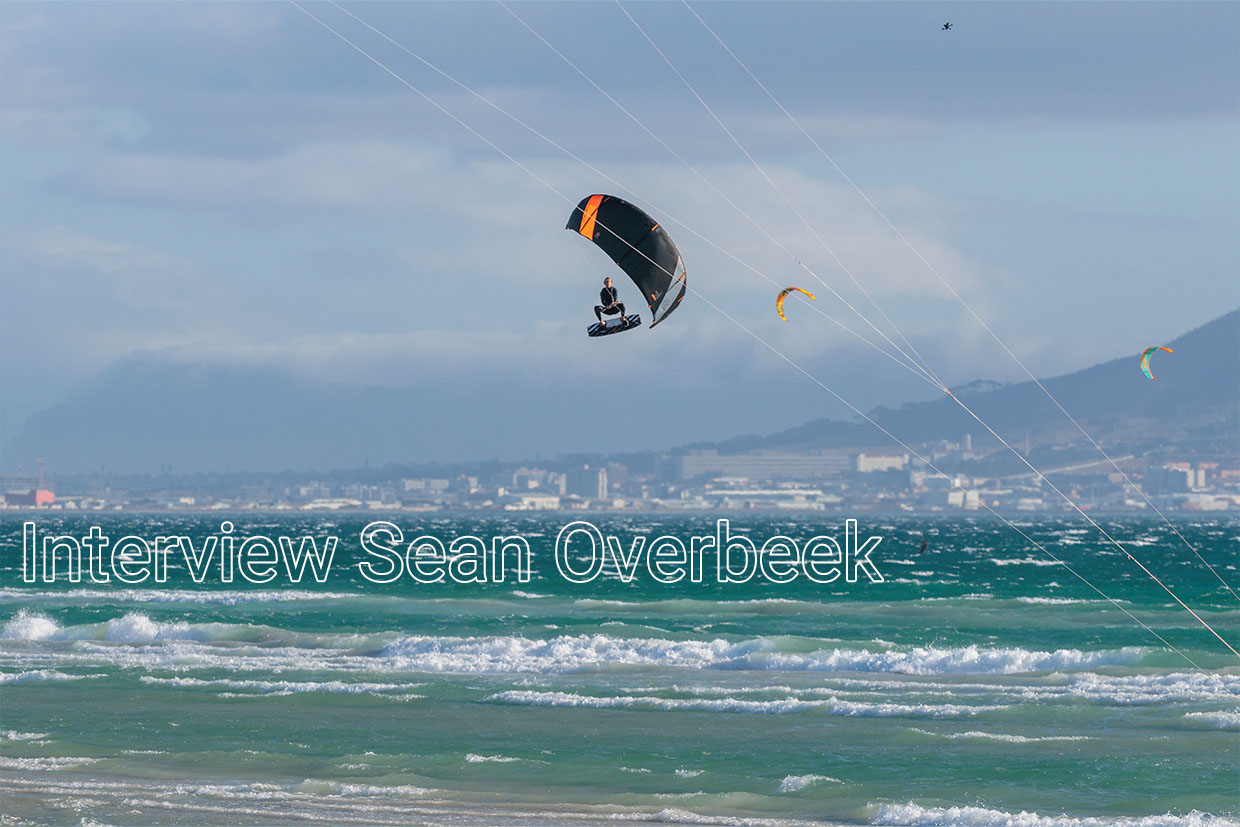A slow and low back roll is a trick for kite surfers who can kite surf well and have the basics of jumping under control. It's an easy kitesurf trick. It can run at low speed, you don't have to steer hard for it and it succeeds in relatively little wind. For many kite surfers, the back roll is therefore the first real trick they try to master. Below the explanation of the back roll kitesurf trick. Join and land him soon too.
Also ambitious? Join.
Of course you don't have to participate. Kitesurfing is a super diverse sport with something for everyone. Anyway, you know that we are still ambitious and practice kitesurfing tricks. Focus does work to master new kitesurfing tricks fellow kiters. Feel free to spend an entire session practicing a specific trick that you want to master. Or do this together with your kitesurfing buddies. Even nicer.
For me it was an eye opener to realize that there are actually 2 types of back rolls: the 'popped' back roll and 'jumped' back roll. On the first, hold the kite at 11 or 1 o'clock and use a strong pop to rotate. On the jump back roll, your kite is heading toward 12 and you use the kite's lift to take to the air while giving rotation. -Sébix Mortier
360 Back roll in 8 steps
Time required: 1 minute
Back roll kitesurf trick principles
If you want to go for the back roll, start with a not too high speed and not too strong wind. Of course the back roll will fail a number of times. However, with a low speed and with not too strong wind you will not be punished hard. That way you keep the courage to keep trying. As a reference: in the video you see me making back rolls at about 23 knots with a 9 meter kite. I weigh about 85 kilos.
- Timing the back roll
Find a calm patch of water. So without too big waves. This can be done on inland water, but also at sea. At sea you often have enough flat parts to practice the back roll. The timing is best when you're going up a little swell or a wave. Then you already have some upward momentum.

- Kite position
When you have determined the position where you want to make the back roll, you gently send the kite up. It depends on which side you want to make the back roll. The kite position should be about 11 or 1 o'clock in the wind window. In the photo below, the kite is no longer visible. Compared to the photo above you can see that I sent the kite up.
The hands can be close together at the bar. With a back roll you don't have to steer. In fact, we don't want you to steer when learning. This only comes on landing.
Now you are ready and it comes down to determining the right time.
- Sales for a back roll
You should not exaggerate the take-off for a low back roll. A push off that is too hard in combination with pulling on the bar can easily cause you to spin. The right power and edge (this is the process of edging the kiteboard) for the take-off is a matter of feeling.
The take-off is a matter of angling the kiteboard, pulling the bar slightly so that you get a little lift from the kite and turning the head and shoulders in the direction of the rotation (as if you were looking over the shoulder).
You can see at the drop off that I have tightened the bar slightly compared to the previous photo. You certainly don't have to put the bar on all the way. You can see that clearly in the pictures and the video.
You gain power from the push-off, but once you feel you have enough power, keep the bar in the same position. If you notice that your take-off is extreme, you can depower a bit. Even if you did not depower at an extreme take-off, the back roll would become higher and more extreme. That comes later. For now you want to show and learn him low and controlled.
- Once in the air
You pull your front knee slightly. This in combination with putting on the bar and looking over your shoulder means that the rotation has started. Your back leg pushes the kiteboard into the water until you come off completely. This is how the rotation begins.

- Keep looking over shoulder
Once in the air, keep looking over the shoulder in your direction of rotation. This way you actually rotate automatically. You see, just like in the photo, the sparkling water that you make. Magnificent! Although you probably don't notice that with your first back rolls.

- Landing timing
Now that your 360 degree back roll is almost over, we are going to land. This is always different. In the photo you can see that I still have height. By making yourself tall and bringing your back leg to the water, you can quickly let the kiteboard make contact with the water. In this case with the fins and the back of the kiteboard. If I hadn't done this, I probably would have gone too far.
It can also be the other way around. Then you have not yet turned and you are already threatening to land. Then you can extend your time in the air by pulling in your knees and steering the kiteboard slightly into the wind.
- Position of the kite at landing
As soon as you have contact with the water, you will probably also need power to continue kitesurfing. You can then tighten the bar slightly and send the kite slightly to 3 o'clock in the wind window. After all, you no longer need the upward force. Forward power and speed. When you are a few meters further and notice that you are back in plane, you can depower again.

- Check after the back roll and roll back bar
You see that your lines are reversed after a back roll. You have to reverse this. Do this controlled and more powered.
Make sure you have the red (left) side of the bar in your left hand when you grab the bar again. Then you know for sure that you are in the right place and can continue kitesurfing safely.
Now you can reminisce!
Mastered 360 Backroll? And through…
Once you have mastered this slow low back roll, you can expand it. For example by making it higher and higher or by doing one or more rotations after it. From a back roll 360, to a 720 or even a 1080. Or a back roll 540 where you land toeside and continue kitesurfing.
Which kitesurf trick do you want to learn? Let us help…
Do you have a kitesurfing trick that you would like to learn and want some explanation about? Let us know. We are really not the best kite surfers, but we like to guide kite surfers and kite surfers in the making. In addition, we are in contact with the best kite surfers who might want to give us, and therefore you, a helping hand.






